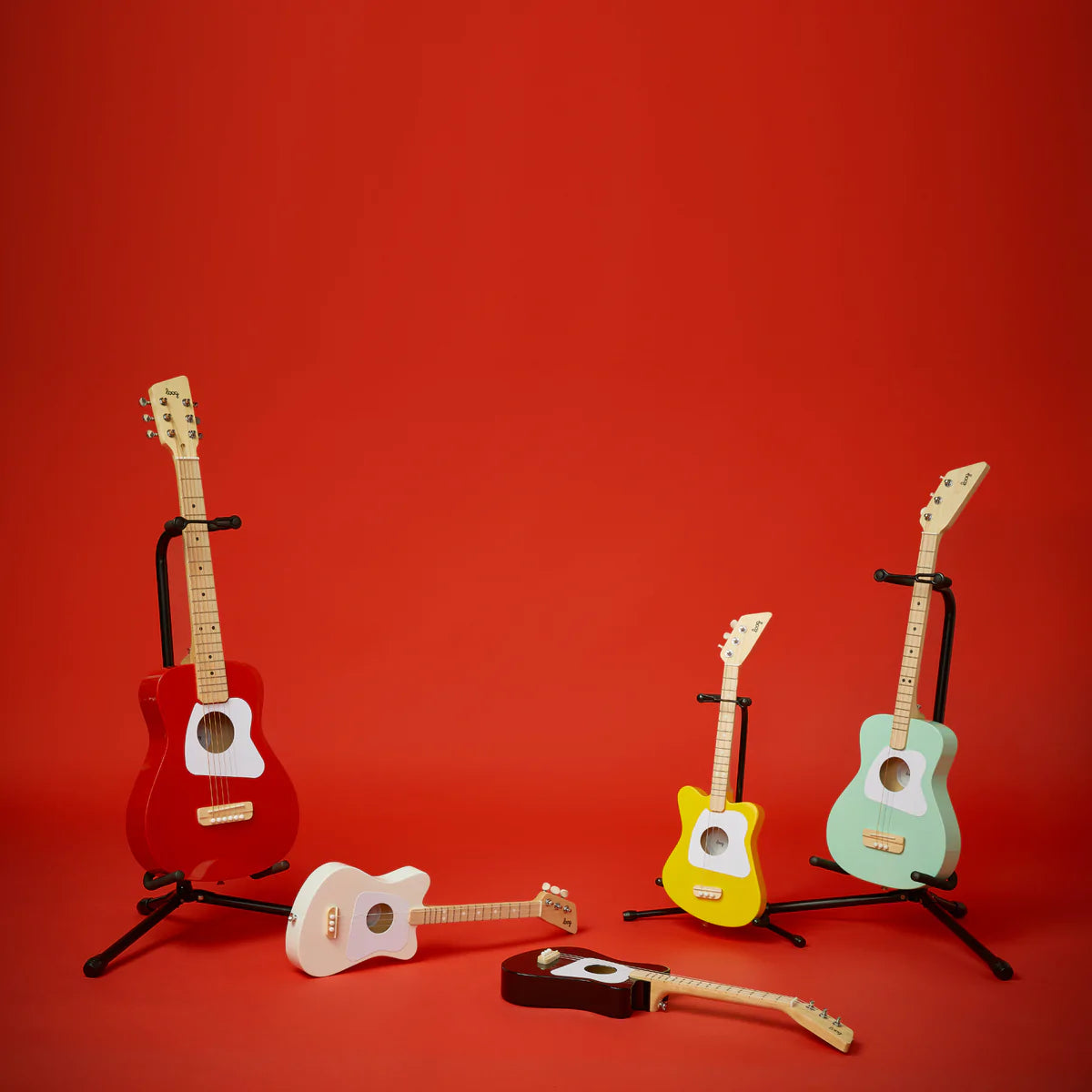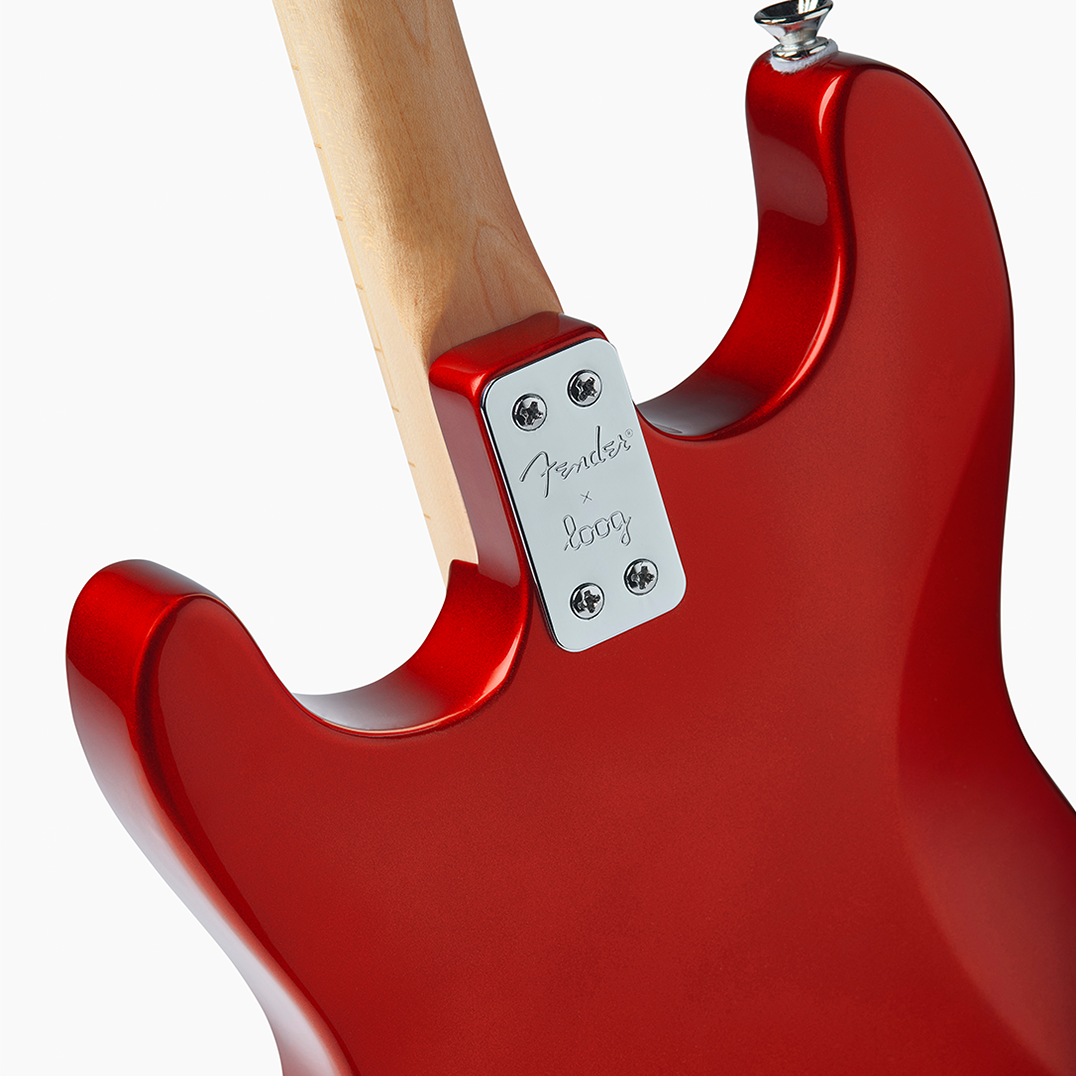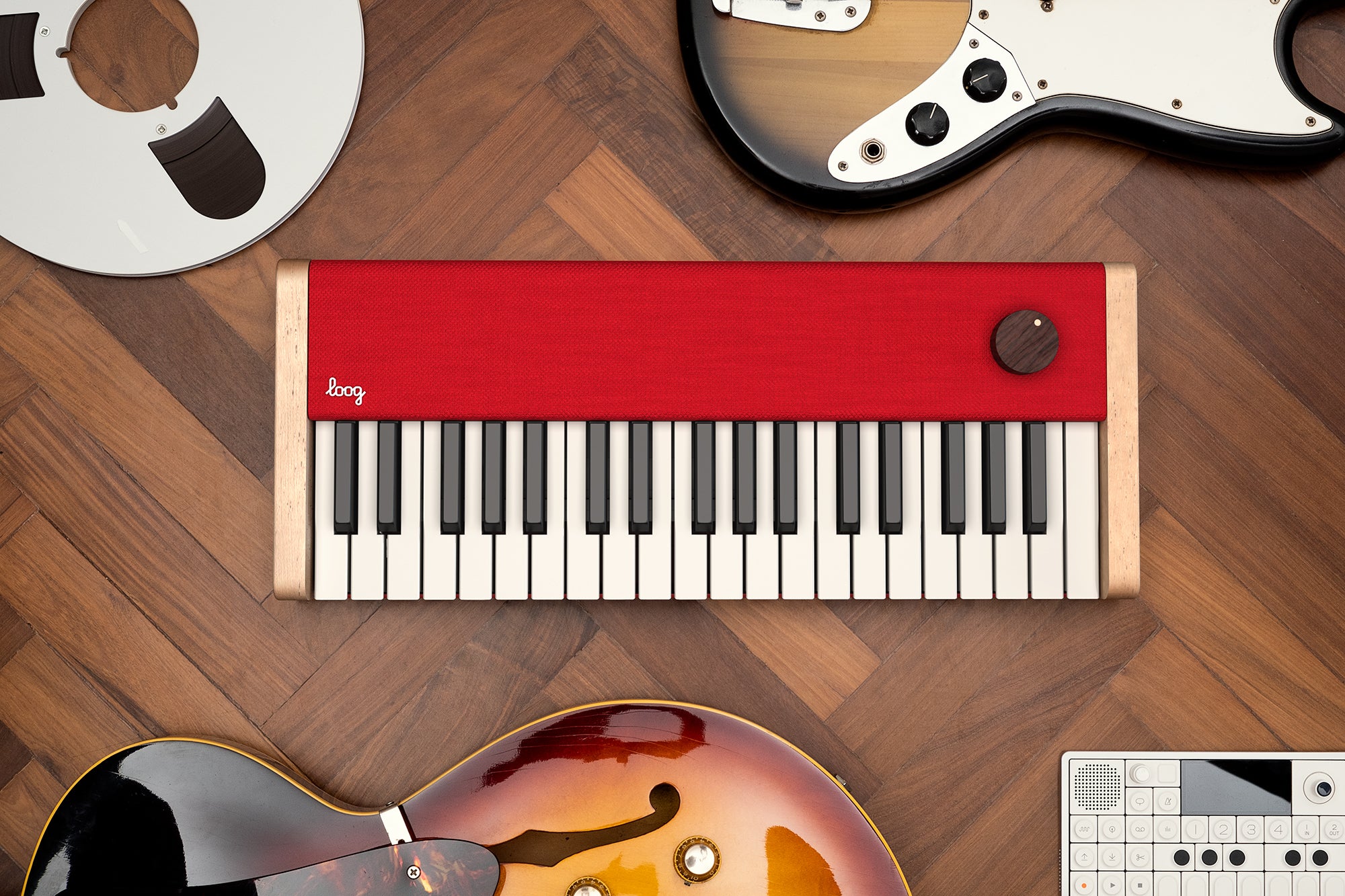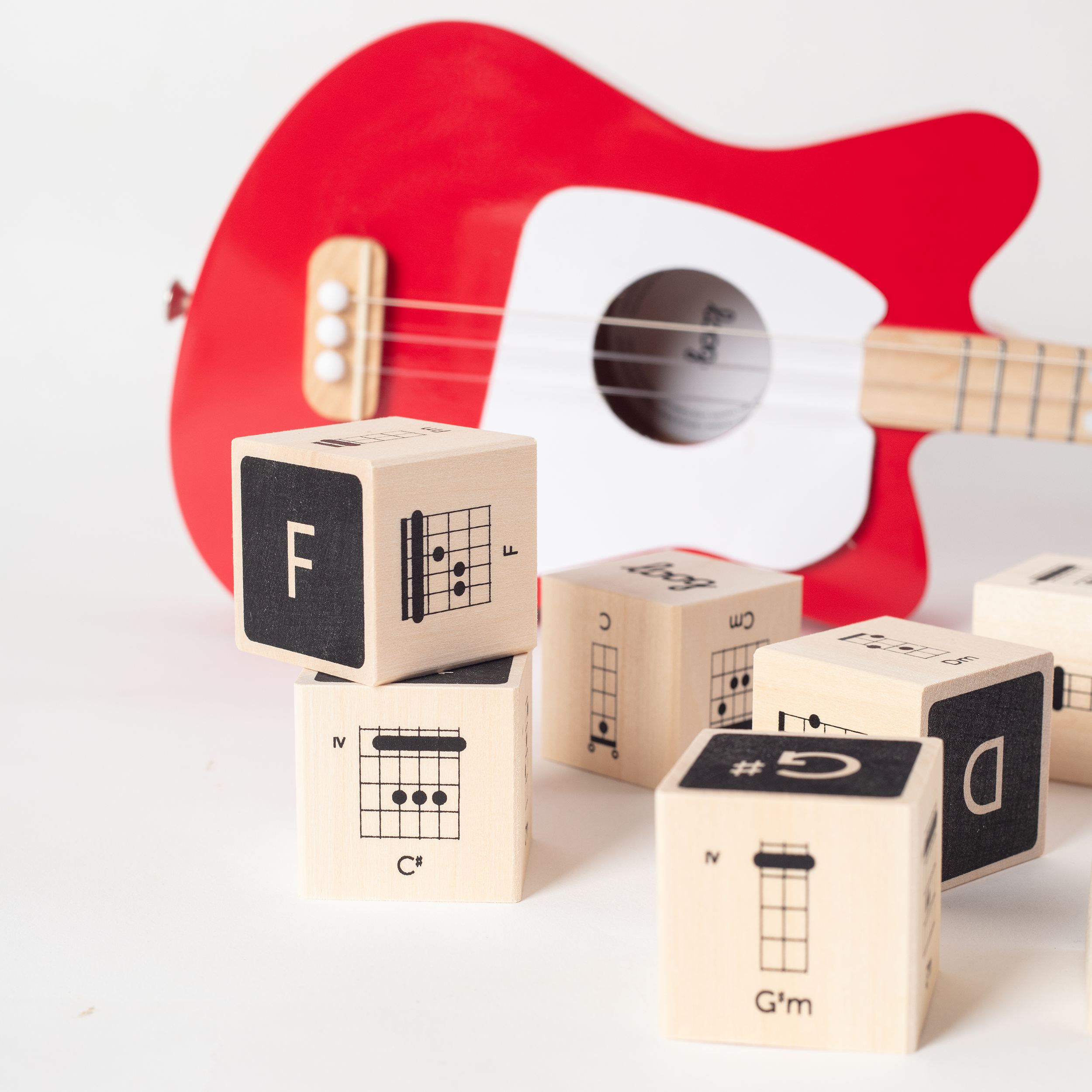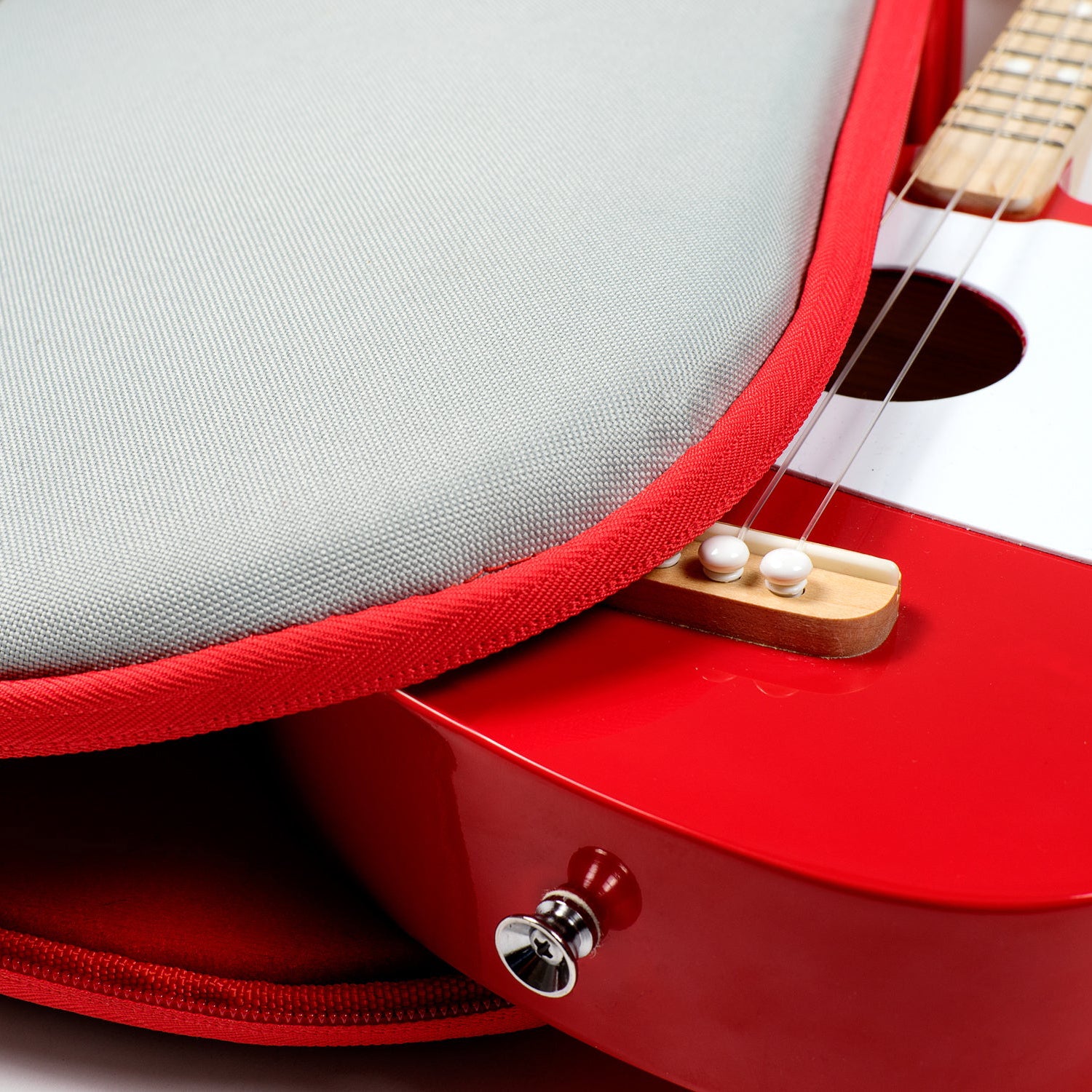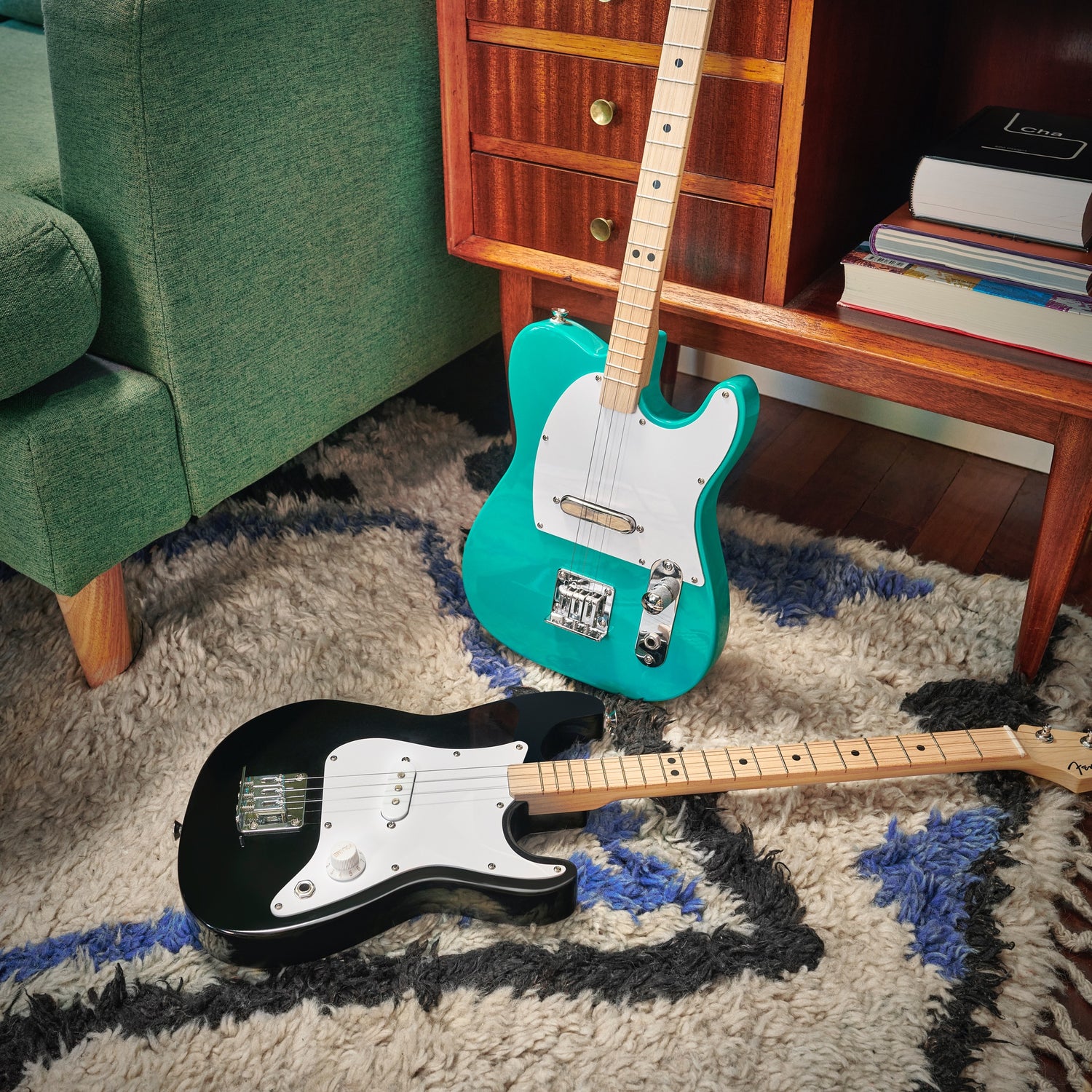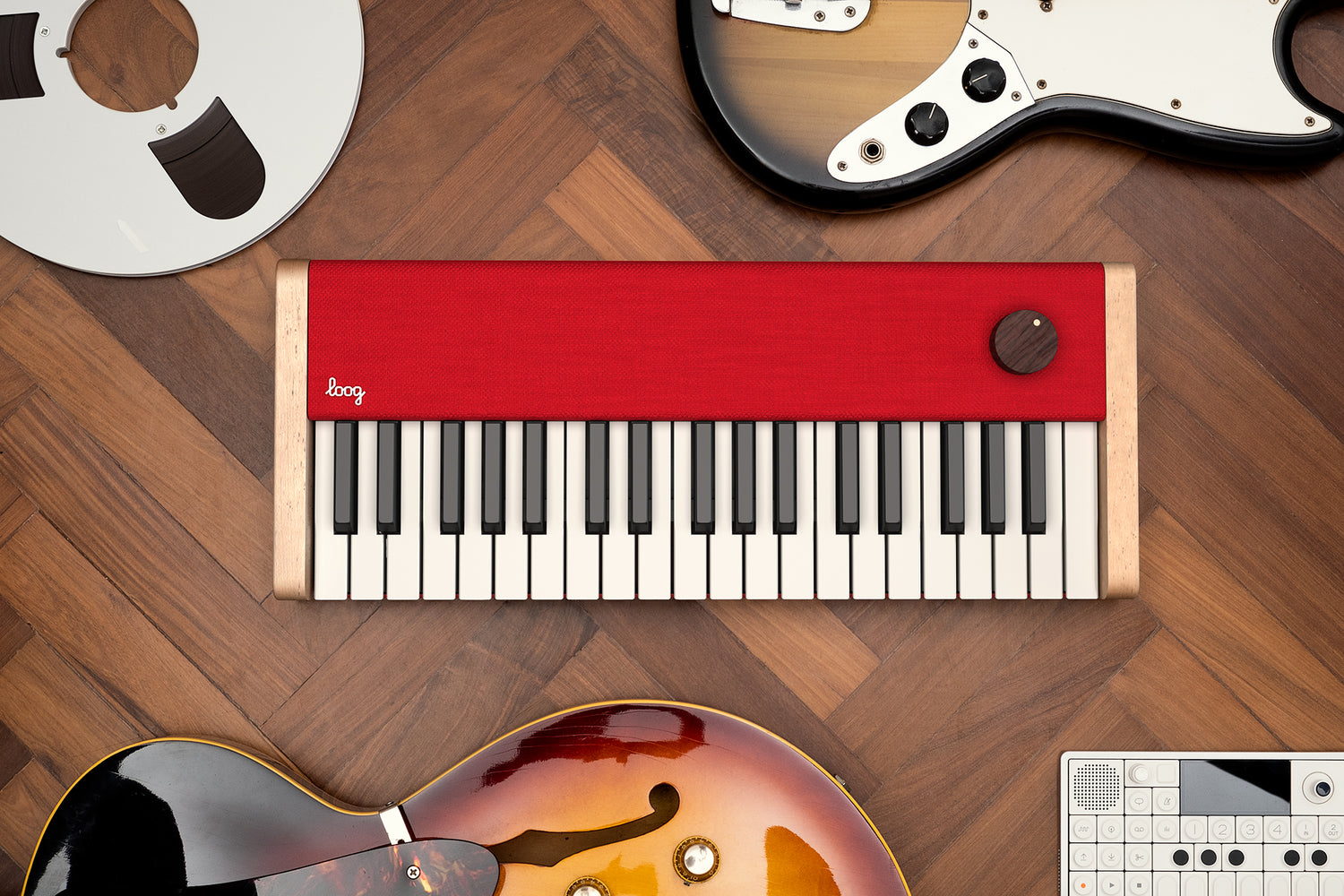hello rockstar 👋
We are Loog: award-winning guitars designed to get kids playing, learning and falling in love with music.

KIDS’ GUITAR REIMAGINED
🎸 Guitar
📱 Learning App
🃏 Chord Flashcards
👩🏫 Video Lessons
🕹 Game-Like Exercises

THE LOOG GUITAR APP
Games, video lessons, a songbook with 200 songs -chords & lyrics- by The Beatles, Taylor Swift, Bruno Mars and more. The all-new Loog Guitar app is designed to get kids playing, learning and falling in love with music, all year long.

new ALL-ACCESS MEMBERSHIP
Backstage Pass™
A suite of lessons, games, stories, songs and even a TV show, all designed to get kids playing, learning and falling in love with music. Includes full access to:
- The Loog Guitar School
- The Loog Guitar App
- The Loog Guitar Show
- Digital Songbook
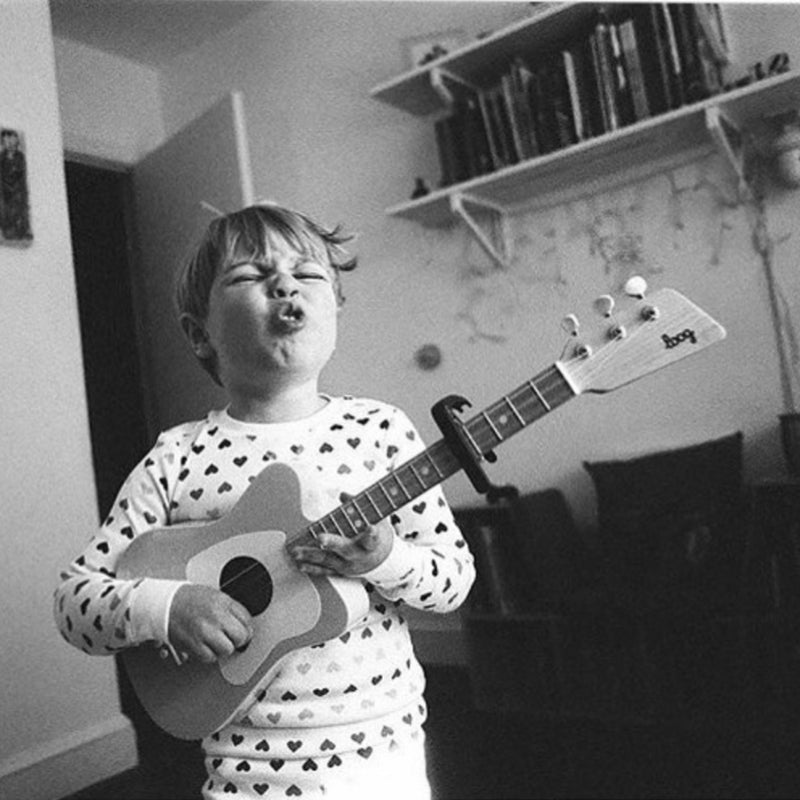
WE ARE ON A MISSION
We started Loog not just to help kids play guitar, but to foster curiosity around music. From Beatles and Prince, to the history of punk rock, to the science of sound waves, to why there are so many metal bands in Finland! 🤓
Learn more about the sometimes nerdy, always awesome world of Loog.
WATCH & LISTEN
LOOG GUITARS IN ACTION
WHOLE LOTTA LOVE
